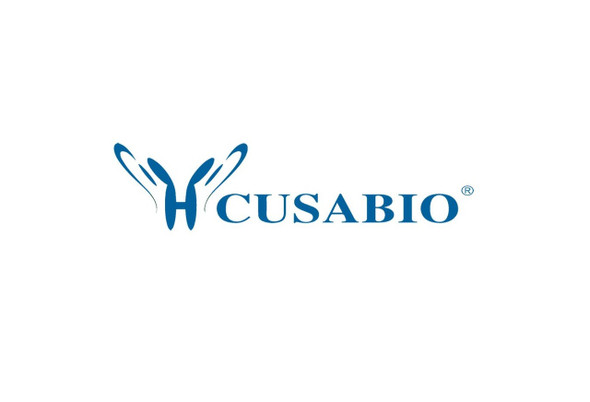Cusabio Mouse Recombinants
Recombinant Mouse Survival motor neuron protein (Smn1) | CSB-MP021838MO
- SKU:
- CSB-MP021838MO
- Availability:
- 3 - 7 Working Days
Description
Recombinant Mouse Survival motor neuron protein (Smn1) | CSB-MP021838MO | Cusabio
Alternative Name(s): Smn
Gene Names: Smn1
Research Areas: Neuroscience
Organism: Mus musculus (Mouse)
AA Sequence: MAMGSGGAGSEQEDTVLFRRGTGQSDDSDIWDDTALIKAYDKAVASFKHALKNGDICETPDKPKGTARRKPAKKNKSQKKNATTPLKQWKVGDKCSAVWSEDGCIYPATITSIDFKRETCVVVYTGYGNREEQNLSDLLSPTCEVANSTEQNTQENESQVSTDDSEHSSRSLRSKAHSKSKAAPWTSFLPPPPPMPGSGLGPGKPGLKFNGPPPPPPLPPPPFLPCWMPPFPSGPPIIPPPPPISPDCLDDTDALGSMLISWYMSGYHTGYYMGFRQNKKEGKCSHTN
Source: Mammalian cell
Tag Info: N-terminal 10xHis-tagged and C-terminal Myc-tagged
Expression Region: 1-288aa
Sequence Info: Full Length
MW: 35.3 kDa
Purity: Greater than 85% as determined by SDS-PAGE.
Relevance: The SMN complex plays a catalyst role in the assembly of small nuclear ribonucleoproteins (snRNPs), the building blocks of the spliceosome. Thereby, plays an important role in the splicing of cellular pre-mRNAs. Most spliceosomal snRNPs contain a common set of Sm proteins SNRPB, SNRPD1, SNRPD2, SNRPD3, SNRPE, SNRPF and SNRPG that assemble in a heptameric protein ring on the Sm site of the small nuclear RNA to form the core snRNP. In the cytosol, the Sm proteins SNRPD1, SNRPD2, SNRPE, SNRPF and SNRPG are trapped in an inactive 6S pICln-Sm complex by the chaperone CLNS1A that controls the assembly of the core snRNP. Dissociation by the SMN complex of CLNS1A from the trapped Sm proteins and their transfer to an SMN-Sm complex triggers the assembly of core snRNPs and their transport to the nucleus. Ensures the correct splicing of U12 intron-containing genes that may be important for normal motor and proprioceptive neurons development. Also required for resolving RNA-DNA hybrids created by RNA polymerase II, that form R-loop in transcription terminal regions, an important step in proper transcription termination. May also play a role in the metabolism of small nucleolar ribonucleoprotein
Reference: "Inactivation of the survival motor neuron gene, a candidate gene for human spinal muscular atrophy, leads to massive cell death in early mouse embryos." Schrank B., Goetz R., Gunnersen J.M., Ure J.M., Toyka K.V., Smith A.G., Sendtner M. Proc. Natl. Acad. Sci. U.S.A. 94:9920-9925(1997)
Storage: The shelf life is related to many factors, storage state, buffer ingredients, storage temperature and the stability of the protein itself. Generally, the shelf life of liquid form is 6 months at -20?/-80?. The shelf life of lyophilized form is 12 months at -20?/-80?.
Notes: Repeated freezing and thawing is not recommended. Store working aliquots at 4? for up to one week.
Function: The SMN complex plays a catalyst role in the assembly of small nuclear ribonucleoproteins (snRNPs), the building blocks of the spliceosome. Thereby, plays an important role in the splicing of cellular pre-mRNAs. Most spliceosomal snRNPs contain a common set of Sm proteins SNRPB, SNRPD1, SNRPD2, SNRPD3, SNRPE, SNRPF and SNRPG that assemble in a heptameric protein ring on the Sm site of the small nuclear RNA to form the core snRNP. In the cytosol, the Sm proteins SNRPD1, SNRPD2, SNRPE, SNRPF and SNRPG are trapped in an inactive 6S pICln-Sm complex by the chaperone CLNS1A that controls the assembly of the core snRNP. Dissociation by the SMN complex of CLNS1A from the trapped Sm proteins and their transfer to an SMN-Sm complex triggers the assembly of core snRNPs and their transport to the nucleus. Ensures the correct splicing of U12 intron-containing genes that may be important for normal motor and proprioceptive neurons development. Also required for resolving RNA-DNA hybrids created by RNA polymerase II, that form R-loop in transcription terminal regions, an important step in proper transcription termination. May also play a role in the metabolism of small nucleolar ribonucleoprotein (snoRNPs).
Involvement in disease:
Subcellular Location: Nucleus, gem, Nucleus, Cajal body, Cytoplasm, Cytoplasmic granule, Perikaryon, Cell projection, Cytoplasm, myofibril, sarcomere, Z line
Protein Families: SMN family
Tissue Specificity:
Paythway:
Form: Liquid or Lyophilized powder
Buffer: If the delivery form is liquid, the default storage buffer is Tris/PBS-based buffer, 5%-50% glycerol. If the delivery form is lyophilized powder, the buffer before lyophilization is Tris/PBS-based buffer, 6% Trehalose, pH 8.0.
Reconstitution: We recommend that this vial be briefly centrifuged prior to opening to bring the contents to the bottom. Please reconstitute protein in deionized sterile water to a concentration of 0.1-1.0 mg/mL.We recommend to add 5-50% of glycerol (final concentration) and aliquot for long-term storage at -20?/-80?. Our default final concentration of glycerol is 50%. Customers could use it as reference.
Uniprot ID: P97801
HGNC Database Link: N/A
UniGene Database Link: UniGene
KEGG Database Link: KEGG
STRING Database Link: STRING
OMIM Database Link: N/A









